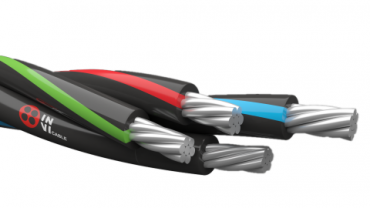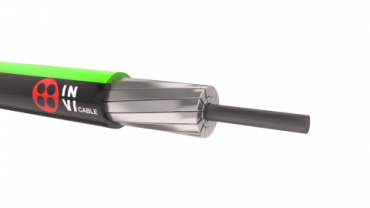Self-supporting insulated (SIP) wires
Self-supporting insulated wire, or SIP for short, is designed to transmit and distribute alternating current electrical energy in lighting networks, as well as in power networks. Self-supporting insulated wire is actively used in the construction of main overhead electrical transmission lines and in a number of other cases.
This is a harness, the design of which contains several aluminum conductors. A special feature is the insulation covering all the cores or only some of them. It is made of polyethylene. This material does not require large production costs and has a number of important properties: moisture-proof, non-toxic, mechanical strength and high breakdown voltage. To strengthen the structure, it is cross-linked, for example, by heating in a neutral gas environment under pressure or by adding special substances - silanes. As a result, the permissible temperature limit of the material increases: from 70 to 90°C - with prolonged exposure, to 130°C - for 8 hours, to 250°C - with a short circuit. The shell is capable of returning to its original shape after deformation. After this, the polyethylene is subjected to light stabilization, i.e. substances are added to it that reduce the destructive effects of UV radiation.
Primacy:
- Easy and safe installation.
- Low installation costs.
- Resistance to negative natural factors.
- Low energy losses.
- Durability.
All these advantages help to save up to 80% of the costs associated with the installation and operation of power lines. Reliability and uninterrupted power supply to consumers is ensured, and electrical losses are reduced.





